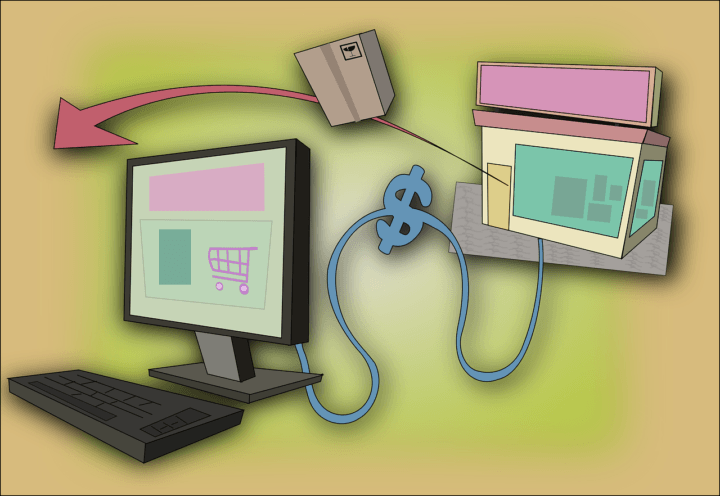Maintaining a minimalist lifestyle in a consumer-driven society can be challenging, but with the right strategies and mindset, it is possible. This step-by-step guide offers practical tips to help you simplify your life, declutter your space, and resist the urge to constantly consume. By focusing on what truly adds value to your life and practicing mindful consumption, you can maintain a minimalist lifestyle that brings you joy and fulfillment.
Define your values and priorities
Identify what truly matters to you and what brings you joy. Reflect on your core values and the things that make you happy. Consider the activities, relationships, and experiences that bring you the most fulfillment. Write them down and use them as a guide when making decisions about how you spend your time and money. Prioritize your spending based on what aligns with your values and brings you the most joy. This will help you avoid wasting resources on possessions or experiences that do not contribute to your overall happiness.
Declutter your living spaces
To start decluttering your living spaces, begin by focusing on one area at a time. Whether it’s a room, a closet, or a drawer, tackle each space individually to avoid feeling overwhelmed. As you go through your belongings, sort them into categories such as keep, donate, and discard. Be honest with yourself about the items that no longer serve a purpose or bring you happiness, and let go of them. Remember, the goal is to create a more organized and peaceful living environment.
Adopt a ‘one in, one out’ policy
To adopt a ‘one in, one out’ policy, make a commitment to declutter and maintain a minimalist environment. Whenever you bring a new item into your home, find an existing item that you no longer need or use, and get rid of it. This could involve donating it to a charity, selling it, or giving it away to someone who could benefit from it. By implementing this policy, you’ll prevent unnecessary accumulation of possessions and ensure a more organized living space.
Practice mindful shopping
Evaluate whether you truly need the item and if it aligns with your values before making a purchase. Avoid impulse buying and focus on buying high-quality, long-lasting items that serve multiple purposes. Assess the practicality and usefulness of the item in your daily life and consider its impact on the environment.
Create a capsule wardrobe
Simplify your wardrobe by curating a collection of versatile, timeless pieces. Start by decluttering your current wardrobe and keeping only items that you love and wear regularly. Choose a color palette that complements your style and stick to it when selecting new pieces. Invest in high-quality basics such as a white t-shirt, a black blazer, and a pair of jeans. Lastly, choose statement pieces that can be dressed up or down, and make sure all the items in your capsule wardrobe can be mixed and matched to create various outfits.
Limit digital distractions
Reduce your reliance on digital devices by consciously limiting the time you spend on them. Minimize distractions by setting boundaries and designating specific times for using technology. Prioritize real-life experiences and connections by putting your phone or other devices away during meals, social gatherings, and quality time with loved ones.
Practice gratitude
Cultivate a mindset of gratitude by regularly reflecting on and appreciating what you already have. Start by making a daily or weekly gratitude list, jotting down at least three things you are grateful for. Focus on experiences, relationships, and personal growth rather than material possessions. Take a moment to truly embrace and acknowledge the positive aspects of your life, allowing gratitude to shift your perspective and bring more joy and contentment.
Embrace minimalistic home decor
Choose decor items that are simple, functional, and aesthetically pleasing. Opt for neutral colors, clean lines, and minimalist designs. This will enhance your living space without creating clutter.
Simplify your schedule
Evaluate your commitments and prioritize activities that align with your values and bring you joy. Make a list of all your current commitments and assess whether they are truly important to you. Identify the activities that bring you the most joy and align with your values, and prioritize them in your schedule.
Avoid overbooking yourself and create space for relaxation, self-care, and pursuing meaningful hobbies. Be mindful of how much you can realistically handle and don’t be afraid to say no to additional commitments that don’t align with your priorities. Schedule regular breaks and downtime to recharge and relax. Dedicate time to activities that bring you happiness and fulfillment, such as practicing a hobby or engaging in self-care activities.
Remember, simplifying your schedule is about creating balance and making room for the things that truly matter to you. By evaluating your commitments and prioritizing activities that align with your values and bring you joy, you can create a schedule that is more fulfilling and rewarding.
Regularly reassess your possessions
Regularly reassess your possessions to maintain a minimalist lifestyle by following these steps:
- Set aside dedicated time to go through your belongings. Find a quiet and clutter-free space where you can focus on the task at hand.
- Take each item into your hands and ask yourself if it still aligns with your values and brings value to your life. Consider if it serves a purpose, brings you joy, or holds sentimental value.
- Be honest with yourself and let go of anything that no longer contributes to your minimalist lifestyle. This can include items that are rarely used, duplicate items, or things that you have outgrown.
- Donate or sell the items that you no longer need. By giving them a new life, you can ensure that they serve a purpose for someone else and reduce waste.
Remember, regularly reassessing your possessions is an ongoing process. By doing so, you can maintain a clutter-free and intentional living space that aligns with your minimalist values.
Key Takeaways
In conclusion, adopting a minimalist lifestyle in a consumer-driven society is no easy feat, but it is certainly possible. By following the steps outlined in this blog post – defining your values, decluttering, practicing mindful shopping, and simplifying various aspects of your life – you can successfully navigate the overwhelming pressures of consumerism and find contentment in living with less. Remember, it is a continuous journey that requires conscious effort and regular reassessment. But with commitment and determination, you can maintain a minimalist lifestyle that aligns with your values and brings you greater fulfillment.
Simple Living Strategies
Getting Started with Minimalist Living
- Declutter your space: Start by going through your belongings and getting rid of anything that you no longer need or use. This will help create a clean and organized environment
- Adopt a “less is more” mindset: Embrace the idea of living with less and being intentional with your purchases. This means being mindful of what you bring into your home and only keeping items that truly add value to your life
- Focus on quality over quantity: Instead of having a large quantity of things, invest in high-quality items that will last longer and serve multiple purposes. This applies to everything from clothing to furniture
- Create a capsule wardrobe: Simplify your closet by curating a capsule wardrobe, which consists of a small collection of versatile clothing items that can be mixed and matched easily. This approach saves time, space, and reduces decision fatigue
- Practice mindful consumption: Before making a purchase, ask yourself if you truly need the item and if it aligns with your values and goals. This helps prevent impulse buying and reduces unnecessary clutter
- Remember, minimalist living is a journey, so take small steps and gradually incorporate these practices into your life
Frequently Asked Questions about Minimalist Living
What are some inspiring real-life examples of individuals or communities who have embraced minimalist living and experienced positive changes as a result?
One inspiring real-life example of an individual who embraced minimalist living and experienced positive changes is Joshua Fields Millburn. He, along with his friend Ryan Nicodemus, started a movement called “The Minimalists.” After experiencing personal hardships and feeling unfulfilled by their material possessions, they decided to let go of their excessive belongings and adopt a minimalist lifestyle. This decision transformed their lives, bringing them greater happiness, contentment, and a sense of purpose.
Another example is the community of Kamikatsu in Japan. Facing limited landfill space, the residents decided to adopt a zero-waste lifestyle. They implemented a rigorous recycling system where each household separates their trash into 45 different categories. This commitment to minimal waste has not only reduced the amount of waste sent to landfills but has also fostered a greater sense of community and environmental consciousness among the residents.
Furthermore, Vex King, a popular author and motivational speaker, shares his journey of embracing minimalism as a means to achieve inner peace and happiness. By simplifying his life and focusing on what truly matters, he was able to overcome personal struggles and create a more purposeful and fulfilling life.
These inspiring individuals and communities demonstrate that embracing minimalist living can lead to positive changes such as increased happiness, reduced environmental impact, and a deeper sense of purpose and contentment.

